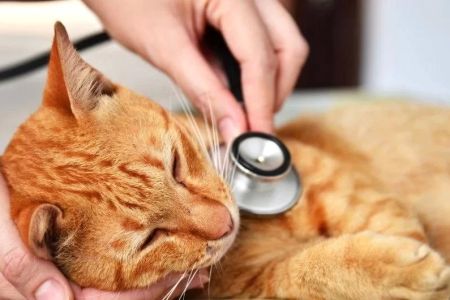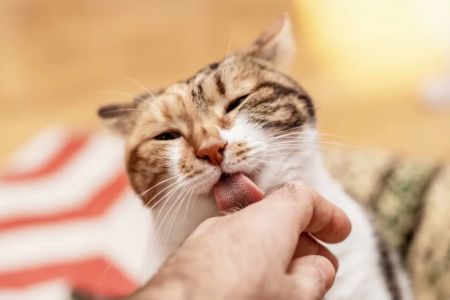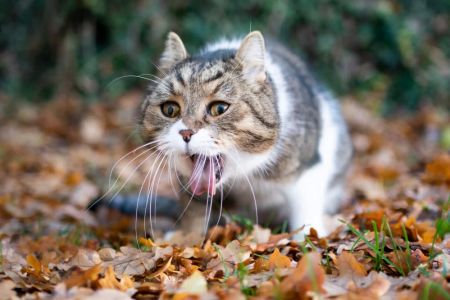Why is My Cat Breathing Loudly and Continuously?
As a cat owner, I’ve had my share of worrying moments. But one particular incident stands out—when I noticed my cat, Whiskers, suddenly breathing loudly and continuously. Her breaths were audible, and I could hear her from across the room. I instantly became concerned and wondered if this was a sign of something serious. After some research and a vet visit, I learned a lot about why cats can develop breathing issues like this. If you’ve noticed your cat experiencing similar symptoms, you're not alone. Here’s what I’ve learned about loud and continuous breathing in cats, and what it could mean for your feline companion.
Understanding Normal and Abnormal Breathing in Cats
Before we dive into the causes, it’s important to understand what is considered normal breathing for a cat. Generally, a healthy cat at rest will breathe between 16 to 30 times per minute. This rate may increase with activity, stress, or hot weather, but it should not sound labored or strained. When a cat is breathing loudly, it could indicate some underlying issue that needs to be addressed. So, how do you know if the loud breathing is a sign of something concerning? Let’s break it down.
What Does Loud and Continuous Breathing Mean?
Loud breathing in cats, especially when it becomes continuous, is often an indicator of respiratory distress. There are a number of conditions that could cause this, from mild issues like a cold to more serious conditions like asthma or heart disease. During my time with Whiskers, I quickly learned that there’s a range of potential causes. Let me walk you through some of the most common explanations behind your cat’s loud breathing.
1. Respiratory Infections
One of the most common reasons a cat might start breathing loudly is because of an upper respiratory infection (URI). These infections are caused by viruses or bacteria and are especially common in young or immune-compromised cats. Whiskers, for example, had a URI that caused her to start wheezing and breathing louder than usual. Along with the loud breathing, she also had nasal discharge, sneezing, and a decrease in appetite. If your cat is showing any of these symptoms, it’s a good idea to visit the vet as respiratory infections can be quite serious if left untreated.
2. Feline Asthma
Feline asthma is another common cause of loud breathing. Cats with asthma often experience wheezing or labored breathing, and it may seem like they’re struggling to catch their breath. This is usually due to inflammation and narrowing of the airways. Whiskers’ loud breathing episodes reminded me of this condition, as she would often have sudden fits of wheezing, especially when she was stressed or exposed to allergens like dust or smoke. If your cat shows signs of wheezing or continuous panting, asthma may be the culprit, and your vet can help by prescribing medication to manage the condition.
3. Heart Disease
Although it’s less common, heart disease can also cause loud breathing in cats. Conditions like hypertrophic cardiomyopathy (HCM), where the heart muscle becomes thickened, can lead to fluid buildup in the lungs. This results in labored breathing, wheezing, or even coughing. When I took Whiskers to the vet, the possibility of heart disease was explored, especially since her breathing was accompanied by lethargy and coughing. If your cat has a history of heart problems or shows signs of rapid or shallow breathing, this could be a serious concern, and veterinary attention is crucial.
4. Obesity and Breathing Difficulties
Obesity can also contribute to noisy, labored breathing in cats. Excess weight puts additional strain on the respiratory system, making it harder for the cat to breathe comfortably. If your cat is overweight, the extra fat around their chest and abdomen can compress the lungs, leading to louder and more difficult breaths. I’ve also noticed that Whiskers, who had put on a few extra pounds, seemed to breathe more heavily after meals or during play. Managing your cat’s weight is an important part of maintaining their overall health and improving their breathing.
5. Allergies and Environmental Factors
Just like humans, cats can develop allergies that affect their respiratory system. Whiskers, for example, has a sensitivity to certain types of dust and pollen, which often caused her to breathe heavily when exposed to these allergens. If your cat’s loud breathing is seasonal or seems related to specific environments, allergies could be to blame. Dust, cigarette smoke, strong perfumes, or even scented candles can trigger these symptoms in some cats. Keeping your home free from allergens and ensuring good ventilation can help your cat breathe easier.
What Should You Do If Your Cat is Breathing Loudly?
If your cat is breathing loudly and continuously, it’s essential to take action. Here’s what I learned about how to manage this situation:
- Observe the Symptoms: If your cat is breathing loudly, pay attention to other symptoms such as coughing, wheezing, lethargy, loss of appetite, or nasal discharge. These can help your vet diagnose the cause.
- Check for Stressors: Ensure that your cat is not stressed. Stress can exacerbate breathing problems, especially in cats with asthma. Try to remove any environmental stressors.
- Visit the Vet: If the loud breathing continues for more than a few hours, or if it’s accompanied by other concerning symptoms, take your cat to the vet immediately. A vet can conduct a physical exam, run diagnostic tests, and recommend a treatment plan based on the underlying issue.
- Monitor Your Cat’s Weight: If obesity is a factor, work with your vet to develop a weight management plan that includes a balanced diet and regular exercise.
- Provide a Comfortable Environment: Make sure your cat has access to a quiet, cool, and well-ventilated space. This will help reduce any breathing difficulty related to heat or humidity.
What to Expect During a Vet Visit
During a vet visit, the veterinarian will typically perform a thorough physical examination and may listen to your cat’s lungs with a stethoscope. Depending on the severity of the symptoms, the vet might recommend tests such as blood work, X-rays, or an ultrasound to help identify the root cause. If the issue is asthma or another respiratory condition, the vet may prescribe medications like bronchodilators or corticosteroids to help reduce inflammation and ease your cat’s breathing.
With the right treatment, most respiratory issues can be managed effectively, and your cat can return to their normal, healthy self. My experience with Whiskers showed me the importance of quick intervention, and I was relieved to see her breathing improve with the right care.
Prevention and Care for Cats with Breathing Issues
Once your cat has been diagnosed and treated, it’s important to continue providing a safe and supportive environment to prevent future issues. Keeping your cat’s weight under control, managing allergies, and reducing exposure to environmental stressors are key factors in maintaining their respiratory health. Regular vet check-ups are also essential to catch any potential issues early.
By staying vigilant and being proactive, you can help ensure your cat enjoys a healthy and comfortable life, free from breathing problems.










